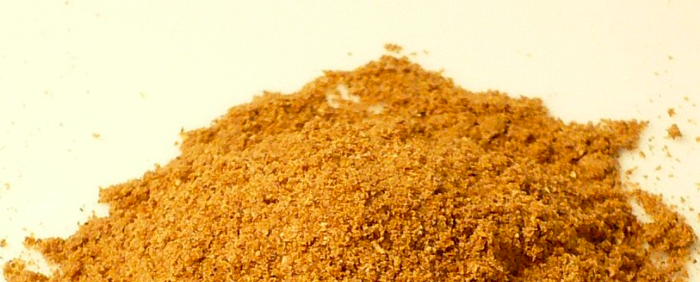
The health benefits of garam masala
Facilitates digestion
It is cumin which is part of garam masala which will stimulate appetite, avoid bloating and therefore contribute to the proper functioning of the digestive tract.
Regulates transit
The mixture of spices contained in garam masala will have an effective role in combating constipation. Indeed, the hot spices will slightly accelerate the digestion time.
Prevents type 2 diabetes
Cinnamon has countless health benefits, and it is part of the composition of classic garam masala. Thanks to it, the blood sugar level will decrease and it will also improve insulin sensitivity in order to better regulate blood sugar.
Anti-inflammatory
If you are prone to dental pain or sensitive gums, garam masala will be your best ally. The clove found in most garam masala will allow you to reduce pain and minimize inflammation of the mouth, gums and teeth.
Nutritional values of garam masala
Per 100g of garam masala
| Carbohydrates | 25.5g |
| Fat | 15.2 g |
| Protein | 13.6g |
| Sodium | 0.060 mg |
| Energy | 293 kcal |
| Energy | 1227 kJ |
The main nutrients in garam masala
Garam masala recipes are very numerous and can contain more than 30 different spices, so be sure to check which spices are contained in your garam masala mixture to ensure the nutrients present.
Manganese
The cardamom and ginger found in garam masala will provide manganese in significant quantities. This trace element will ensure better assimilation of iron and strengthen your natural defenses.
Vitamin A
Very recognized for its antioxidant properties, cinnamon will boost your body by slowing cell aging and stimulating the renewal of your cells.
Vitamin K
It is thanks to coriander that vitamin K is present in garam masala. This vitamin will especially promote good blood clotting.
Magnesium
The clove will allow you to maximize your magnesium intakes and give a boost to your immune defenses while helping to relax the muscles of your body.
Iron
Associated with manganese, the iron brought by the clove will be well assimilated in your body. To be sure to cover your iron needs, do not hesitate to combine this spice with lentils, for example, which are also rich in iron.
The nutrients and trace elements contained in garam masala will complement your food intake, remember that a spice is consumed in small quantities and that a balanced diet must include many other food groups to cover all of your needs.
Using garam masala in cooking: some recipe ideas
The taste of garam masala
If its hot and spicy flavors can at first seem like curry, garam masala will have the distinction of having a slightly smoky taste.
How to choose garam masala?
The color and appearance of garam masala can vary depending on the spices that make it up. In order not to be mistaken, prefer a garam masala containing several of the spices mentioned in the paragraph below.
Composition of garam masala
The following spices can be found in the composition of garam masala:
- Cardamom
- Coriander
- Cinnamon
- Pepper
- Ginger
- Cloves
- Cumin
- Fenugreek
- Mustard seeds
- Turmeric
- Caloupilé
- Nutmeg
In Indian recipes, the ingredients can be more varied and contain almost 30 different spices.
How to properly store garam masala?
This mixture of spices will keep better away from light, heat and humidity. The container case must also be airtight.
How to cook garam masala?
In order to preserve all the aromas and unlike the curry, add the garam masala at the end of cooking, avoiding bringing the preparation to a boil.
Garam masala will go perfectly with poultry, rice, and vegetables. It is mainly found in Indian cuisine in chicken tikka masala dishes, dahl and fish marinades.
Little story of garam masala
The name of this mixture of spices born in India comes from Hindi, “garam” means “hot” and “masala” “spice”. Over the years, garam masala has spread beyond the borders of India and has taken a prominent place in other cuisines of the world.
We thus find Massala in the traditional cuisine of Mauritius as well as Massalé in the kitchens of Reunion Island.
These garam masala derivatives are not composed of the same spices and their intensity will vary depending on the traditional recipe used.